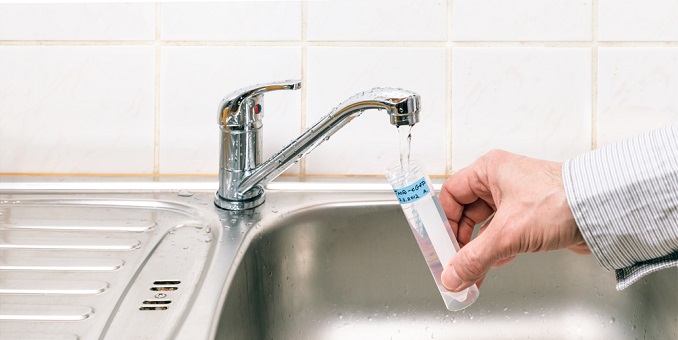The Perfect EC To Grow Perfect Cannabis
Published :
Aug 1, 2017
Categories :
Cannabis cultivation

Electrical Conductivity (EC) is a must have file in the marijuana grower's essential knowledge database. EC is the first thing that should be checked if your plants are looking a bit ill. Know what it is and how to treat fluctuations in order to achieve the juiciest buds possible.
Understanding EC is one of the crucial things to learn on the way to becoming a master grower.
Electrical Conductivity is an indication of the amount of dissolved sodium in any given water sample. PPM is a different way of interpreting the same conditions. Most EC meters are also PPM meters and can switch between the two with the push of a button.
WHAT IS EC?
Electrical Conductivity is the measure of salinity in a water sample expressed in microsiemens per centimetre - the theory being that sodium ions carry a charge that can be measured. PPM is the measure of total dissolved solids in any given water sample, funnily enough, by reading electrical conductivity. Sodium chloride is the most commonly found dissolved solid, except in out-of-the-ordinary circumstances. Houses with older pipes, for example, or aquifer water from limestone strata are at risk of higher EC levels.
EC is very important to the cannabis grower. Several debilitating conditions can arise when the EC is either too high or too low. Mild EC fluctuations can result in slowed growth and leaf burning. Extreme EC fluctuations can lead to nutrient lockout at the roots and subsequent plant death.
Most domestic water in the Western world has an acceptable EC, usually between 0.1 and 0.6. There is a chance of a higher EC reading if the water comes from aquifers, especially from limestone strata where minerals can be dissolved. This can result in levels of 1.0 or more.
For the same reason, higher readings may appear if the plumbing of a house is old. Scale build-up can mineralise the water. In both instances, the condition of the water is already known. Soap won't lather and the water tastes flat. If the water is being treated with an RO filter, then the mineral content will be negligible with an EC of 0.0-0.002.
If you approach the local water authority, they can usually supply a mineral analysis of your water supply.

PLANT REACTIONS TO EC FLUCTUATIONS
EC fluctuations can be interpreted as under or over fertilising. Not because the mix has been made poorly, but because nutrients can alter their levels under a number of conditions. For one, nutrients can build up in the grow medium or deplete in a reservoir or DWC due to evaporation.
Very high EC levels can disrupt water movement in plant cells. Transpiration is an essential plant process that plays a major role in photosynthesis and the processing of carbon dioxide and carbohydrates. Plants will exhibit loss of turgor and leaves will wilt and curl. Foliage will become dark and brittle and new growth will be stunted. Trunks may go purple with nitrogen toxicity and plant growth will slow to almost zero.
High EC can also cause nutrient lockout. Too much sodium at the root ball increases osmotic pressure and prevents nutrient uptake. Plants can display one or more of the many leaf symptoms caused by underfertilising. It is easy to kill your plants with an under feeding misdiagnosis. EC should be the first thing checked at the sign of any problem.
Too low an EC, or underfertlising, causes increased water uptake. Plants will be pale green and droopy with an exaggerated distance between internodes. Correcting a low EC is far more desirable than correcting a high EC.
CORRECTING EC PROBLEMS
Correcting low EC problems is as simple as mixing a stronger nutrient solution. 30% stronger to start, then increasing if necessary. Easy does it. It would be a bad move to go from too low an EC to a high EC in one feeding.
Treating a high EC is a bit more time consuming. It involves flushing the grow medium with fresh, clean water (do not use RO water, this will make things worse by stripping calcium and magnesium from the plant). Flush with 80% volume of the growing container and leave to drain thoroughly. Once drained, use a weak nutrient solution for the first watering, then return to the normal mix from day two onward. There will be immediate results in the turgor of the plants and their colour will improve noticeably overnight.
In pure hydroponics and DWC systems, reservoirs should be checked regularly. Too high an EC can be corrected by adding water. Too low an EC can be solved by adding more nutrient solution.
If the EC of the available water is 1.0 or over, there are specially designed nutrients for hard water. Really though, it would be better to run the water through an RO filter and rebuild the whole nutrient profile from scratch.
EC OUTDOORS OR ORGANIC SOIL INDOORS
Although it should still be checked regularly, EC accuracy is less of a worry for organic soil and outdoor growers. With hydroponics, there is little margin for error when everything the plant needs is supplied by the grower. Too much or too little of anything is quickly exhibited in the plant’s health. With outdoor or indoor soil grows, microorganisms act as buffers that protect the plant from fluctuations in water quality. This provides a more substantial margin of error when watering.
HOW TO MAKE AN EC READING
Your first reading should be of the source water. Fill a clean jar and let the water stand for half an hour, out of direct sunlight. Having a clear idea of the minerals already dissolved in the source water guarantees a correct nutrient mix.
Water samples in the grow room should be taken from the runoff of all systems. It is wise to monitor the EC at the reservoir of hydroponic and DWC setups. Samples should always be taken from the runoff using a clean jar. With growing mediums, push the meter in the depth of the probe. Use a calibrated EC meter to make the reading. Take the tests at the same time each day and record the results.
The best EC readings vary throughout different stages of the cannabis grow cycle:
* Seedlings prefer 0.8-1.3.
* Clones 0.5-1.3.
* Vegetative stage 1.3-1.8.
* Flowering stage 1.2-2.0.
Refer to breeders’ recommendations for prime EC levels of different breeds. Optimal readings can vary from strain to strain.







































